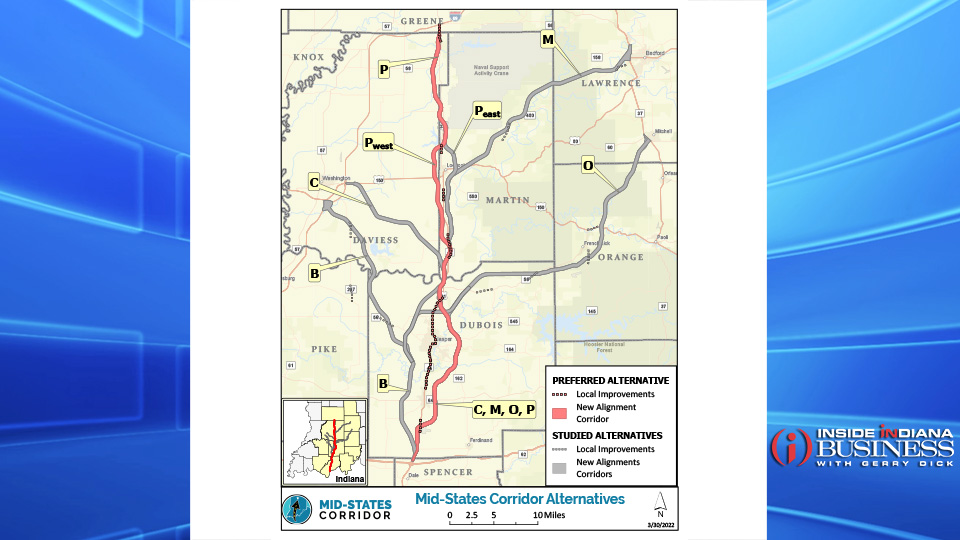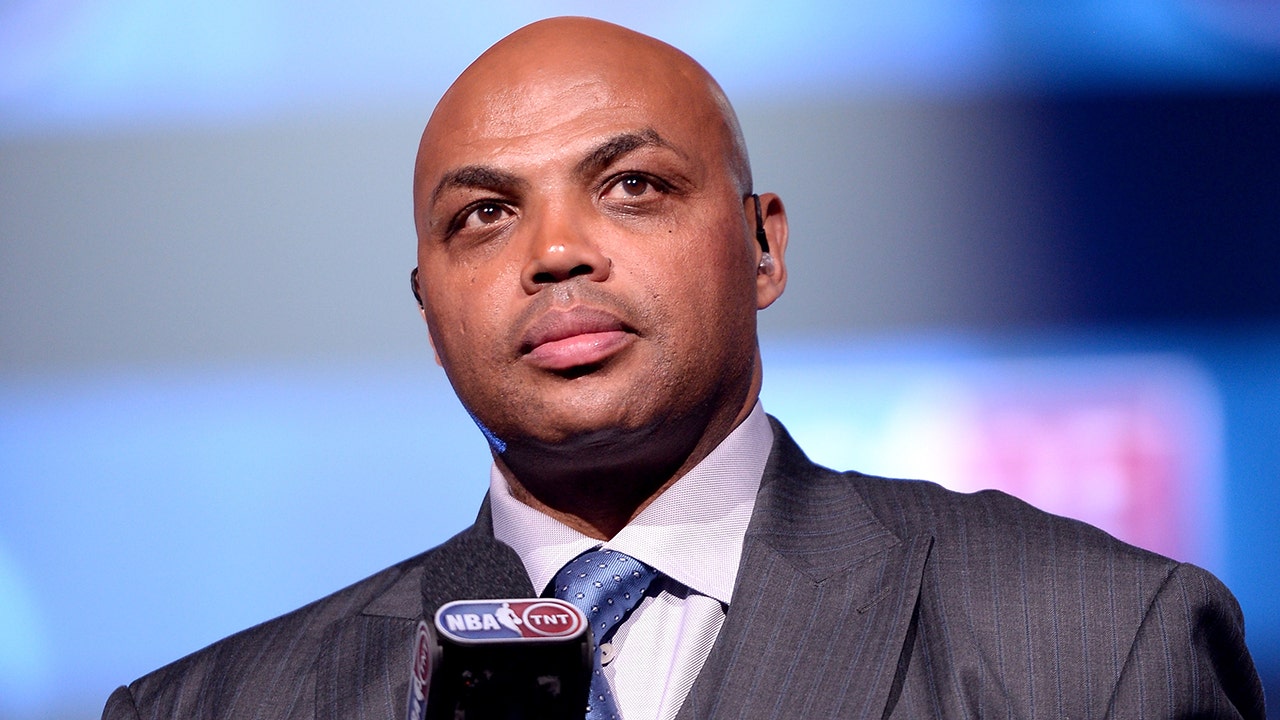Indiana
Indiana Gov. Eric Holcomb signs proclamation condemning antisemitism while vetoing bill defining it

INDIANAPOLIS — Indiana Gov. Eric Holcomb vetoed a bill Monday that would have defined antisemitism in state education code while simultaneously signing a proclamation condemning all forms of antisemitism.
The Republican governor cited changes made to the bill in the final days of the legislative session in a news release. Aimed at addressing antisemitism on college campuses, the bill’s opponents argued that early versions of it would penalize people for criticizing Israel.
Disagreements between lawmakers in the Republican-controlled state House and Senate threatened to kill the bill before reaching a compromise in the final hours of the legislative session on March 8.
This is the second time the state House has tried to pass the legislation; an identical bill died last year after failing to reach a committee hearing in the state Senate.
Around the country, similar legislation rose to prominence this session amid the ongoing Israel-Hamas war.
The proposal would broadly define antisemitism as religious discrimination, claiming it would “provide educational opportunities free of religious discrimination.”
Defined in 2016 by the International Holocaust Remembrance Alliance, antisemitism is “a certain perception of Jews, which may be expressed as hatred toward Jews. Rhetorical and physical manifestations of antisemitism are directed toward Jewish or non-Jewish individuals and/or their property, toward Jewish community institutions and religious facilities.”
The original House bill used the organization’s definition, which its author has since warned against using in law. It also included “contemporary examples of antisemitism” provided by the group, which make explicit references to Israel. These have been adopted by the U.S. Department of State and under former President Donald Trump, through executive order.
Over 30 states have adopted the definition in some way either through proclamation, executive order or legislation.
State senators, however, passed an amended version of the bill earlier this month that still included the IHRA’s broad definition of antisemitism but deleted the group’s name and examples that include explicit references to Israel. Opponents including the Indiana Muslim Advocacy Network and Jewish Voice for Peace Indiana had argued that such direct references would stifle criticism of Israel in academic settings and activism on campuses in support of Palestinians facing a worsening humanitarian crisis and widespread starvation.
The disagreement between the chambers prompted the bill to go to conference committee, a body consisting of lawmakers from both chambers. The committee reached an agreement on the last day of the legislative session to add the IHRA attribution back to the bill but remove the clause with examples. The final version was approved in both chambers with bipartisan support.
“The language that emerged in the final days of the legislative session fails to incorporate the entire International Holocaust Remembrance Alliance (IHRA) definition and its important contemporary examples,” Holcomb said about vetoing the bill. “Additionally, the confusing language included in the bill could be read to exclude those examples.”
The Indianapolis Jewish Community Relations Council (JCRC) said the group supported the final version of the bill after it passed, as did the Indiana Muslim Advocacy Network, which was opposed to the original version over concerns about academic freedom and advocacy.
Holcomb’s support wasn’t clear after its passage. Last week, he expressed concern that Indiana would be an “outlier” among other states thanks to the changes and said he wanted to ensure there is no “ambiguity” in Indiana law.
Republican Indiana Attorney General Todd Rokita called on Holcomb to veto the bill, saying it is “toothless” without the mention of the examples.
Holcomb’s proclamation condemning antisemitism cites the IHRA definition and its examples. In a statement, Holcomb said the proclamation “ensures we join numerous states and countries by supporting the entire IHRA definition with its inextricable examples.”
The JCRC thanked Holcomb in a statement for his “thoughtful” consideration of “the concerns raised in recent days by national experts and the Attorney General.”
The group said it will work closely with lawmakers and the state to “ensure that the guidance of Governor Holcomb’s proclamation is correctly applied to identify and confront antisemitism and meet the needs of Jewish students in K-12 and higher educational settings.”
Holcomb has not vetoed a bill since 2022. Lawmakers can easily overturn a veto in Indiana and only need a simple majority to do so. It’s unclear though if or when lawmakers might reconvene.
The push to define antisemitism in numerous states predates the Oct. 7 attacks in which Hamas killed some 1,200 people, mostly civilians, sparking a war that has killed more than 31,000 Palestinians. But the war gave supporters of the push another motivation. This year, governors in Arkansas, Georgia and South Dakota signed measures and a proposal is still awaiting gubernatorial review in Florida.

Indiana
Pierogis not the only star of Pierogi Fest in Whiting, Indiana

Watch CBS News
Be the first to know
Get browser notifications for breaking news, live events, and exclusive reporting.
Indiana
First Tier 2 study for Mid-States Corridor project to begin – Inside INdiana Business

Loading audio file, please wait.
The team behind the Mid-States Corridor Project in southern Indiana has received approval from the Indiana Department of Transportation to proceed with its first Tier 2 study.
The study will be the first of several to determine the alignment and access plan for the new highway, which is being designed to connect I-64 to I-69 through Spencer, Dubois and Martin counties.
The first Tier 2 study will focus on what’s known as Section of Independent Utility 2, or SIU 2, which extends from Interstate 64 near Huntingburg and Jasper to State Road 56 at Haysville in Dubois County.
The goal of the study is to “evaluate more site-specific impacts to determine the specific preferred location and right-of-way needs” for the highway. The study of SIU 2 is expected to take about three years to complete.
Early activity of the study will include survey work and data analysis, the project team said.
Mid-States Corridor rolls forward with business sector support, community blowback
In March 2023, the project team identified a refined preferred route alternative, known as Alternative P, which would run 54 from the I-64/U.S. 231 interchange up to I-69 near Odon.
The Final Environmental Impact Statement (FEIS) issued last September said four new alignment SIUs will each require a separate Tier 2 analysis and are expected to take place sequentially, rather than concurrently.
“Securing and programming funding to complete construction of each SIU may take nine to 15 years in several distinct phases of three to five years,” the FEIS said.
The Tier 2 studies for the remaining SIUs have not been scheduled.
Story Continues Below
Indiana
Parents can safely surrender babies up to 30 days old due to Indiana’s safe haven law

The deaths of two abandoned babies left out in the elements became foundational in establishing Indiana’s Safe Haven Law.
After the discovery of these babies, the state’s opinion on parents who couldn’t care for their babies shifted, which is why there are safe haven laws today.
Here’s what to know.
Baby Ephraim was a baby found dead outside a hospital emergency room on Jan. 26, 2000. He died of hypothermia.
While the parents clearly wanted their baby to receive the care he needed, it was determined that the fear of prosecution is what deterred the parents from handing their child directly to a nurse inside the hospital.
Indiana had been mulling legislation like many states across the country, but Ephraim’s death would solidify their decision and on March 24, 2000, then-governor Frank O’Bannon signed the Indiana law.
Although the law didn’t exist to help Ephraim, it should have saved Baby Jacob.
Just a year later, on Dec. 8, 2001, Jacob was found dead in a trashcan by workers outside a laundromat. He was wrapped in a sheet, several shopping bags and a trash bag. He still had his umbilical cord attached to his tiny body.
At this point, Indiana’s Safe Haven law had been enacted for 18 months, but few people in Indianapolis knew. Jacob’s death would change that by prompting a widespread awareness campaign.
Read the full story: 2 babies found dead outside were buried in unmarked graves. How they changed Indiana law
Indiana’s Safe Haven Law allows for the anonymous surrender of an infant 30 days old or younger without prosecution. Infants may be surrendered at fire departments, hospitals and emergency medical services stations. So long as there are no signs of intentional abuse or neglect, the person surrendering the child is not required to provide any information.
Developed by Monica Kelsey, who learned as an adult that she had been abandoned at a hospital after birth, safe haven baby boxes are devices installed in an exterior wall of fire stations or hospitals that allow for the anonymous surrender of an infant. The first box was installed at a fire station in Woodburn, Indiana, near Fort Wayne, in 2016.
The device is a two-way box, with a door inside and outside the building. The boxes are temperature controlled and programmed with several silent alarms to alert first responders. A silent alarm is triggered when the outside door is opened, when the baby is placed in the bassinet and again when the door is closed and automatically locked.
First responders retrieve the baby from inside the building and transport the infant to an area hospital for medical evaluation. The Department of Child Services then assumes custody of the child.
Do people actually use safe haven baby boxes?
Yes. In 2017 and 2018, babies were surrendered in a box at a Michigan City, Indiana, fire station. Delays in construction meant a box was still not ready when a baby was surrendered at Decatur Township Fire Department on Indianapolis’ southwest side in 2018. The infant was found healthy.
In October of 2023, IndyStar reported that a baby box in Carmel was one of the most used in the country.
According to Kevin Albin from Safe Haven Baby Boxes, 2 babies have been surrendered via baby boxes in the state this year, with many more being surrendered directly to personnel using the national crisis hotline.
Previously: More infants are left in this Indiana baby box than anywhere else in the country
In Indiana, parents can surrender babies that are up to 30 days old either face to face or via baby boxes without facing prosecution.
You can check Safe Haven Baby Box’s website to find the nearest baby box.
Katie Wiseman is a trending news intern at IndyStar. Contact her at klwiseman@gannett.com. Follow her on Twitter @itskatiewiseman.
-

 World1 week ago
World1 week agoOne dead after car crashes into restaurant in Paris
-

 Midwest1 week ago
Midwest1 week agoMichigan rep posts video response to Stephen Colbert's joke about his RNC speech: 'Touché'
-

 News1 week ago
News1 week agoVideo: Young Republicans on Why Their Party Isn’t Reaching Gen Z (And What They Can Do About It)
-

 Movie Reviews1 week ago
Movie Reviews1 week agoMovie Review: A new generation drives into the storm in rousing ‘Twisters’
-

 News1 week ago
News1 week agoIn Milwaukee, Black Voters Struggle to Find a Home With Either Party
-

 Politics1 week ago
Politics1 week agoFox News Politics: The Call is Coming from Inside the House
-

 News1 week ago
News1 week agoVideo: J.D. Vance Accepts Vice-Presidential Nomination
-

 World1 week ago
World1 week agoTrump to take RNC stage for first speech since assassination attempt




/cdn.vox-cdn.com/uploads/chorus_asset/file/25547597/Screen_Shot_2024_07_26_at_3.55.30_PM.png)












